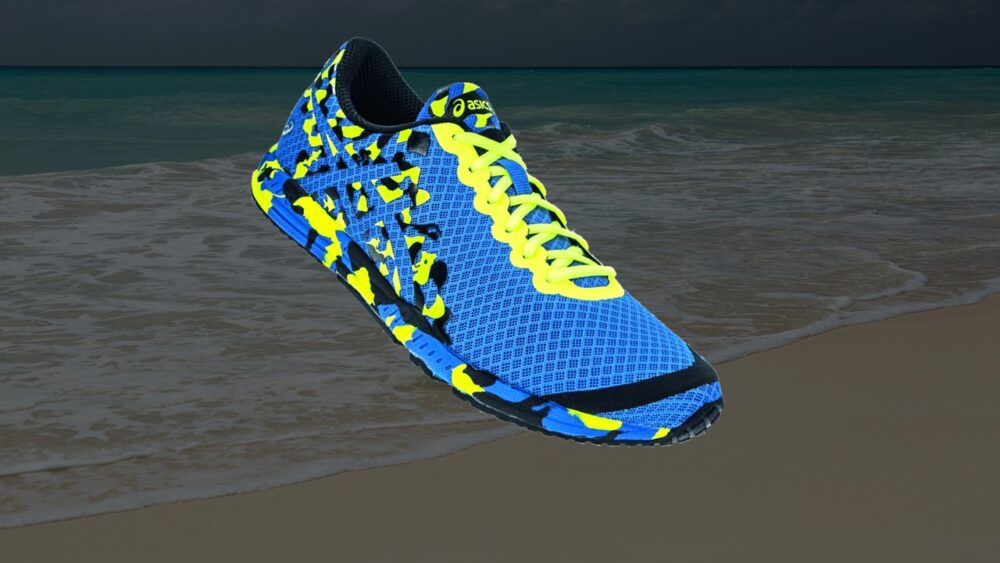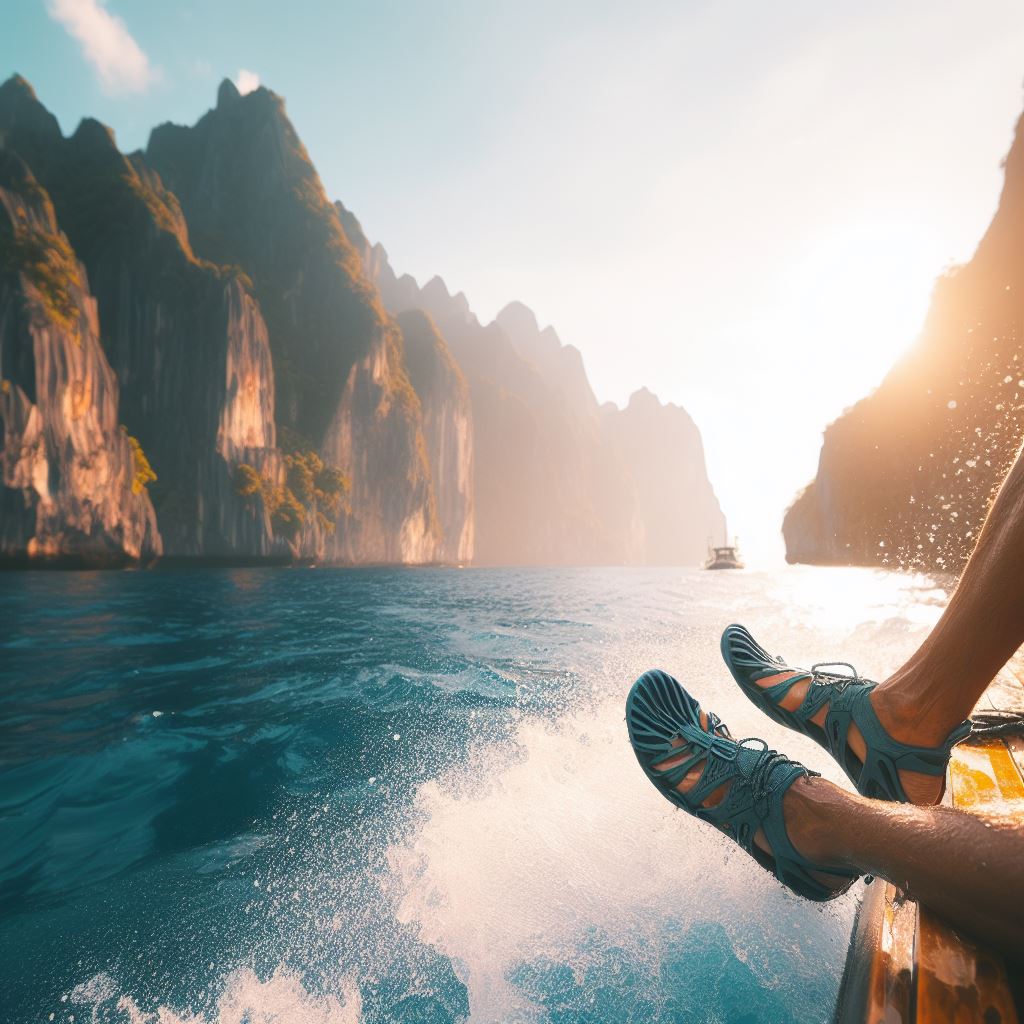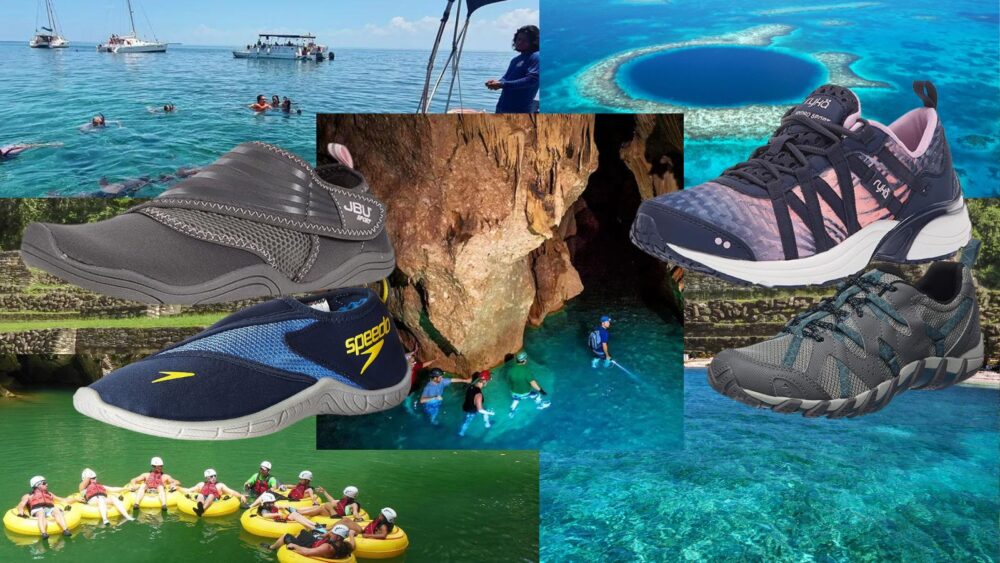Do You Need Water Shoes In Hawaii: Hawaii Beach Secret You Should Know
Do you need water shoes in Hawaii? Paradise awaits in Hawaii, where stunning beaches and crystal-clear waters attract millions of visitors each year. However, Hawaii’s natural beauty comes with some unexpected dangers lurking beneath the surface.
From sharp rocks to coral reefs, the Hawaii ocean floor can be a hazardous place, especially for those without proper footwear. So, the question begs: do you need water shoes in Hawaii? The answer may surprise you.
In this article, we’ll explore the reasons why wearing water shoes is essential for your safety, comfort, and overall enjoyment during your Hawaiian vacation. Get ready to dive into the secrets of Hawaii’s shoreline and learn why a simple pair of shoes could make all the difference in your beach adventure.
Do You Need Water Shoes In Hawaii
Yes, you should definitely wear water shoes in Hawaii. The beautiful beaches and coastline of Hawaii can be dangerous if you’re not properly equipped, and water shoes are an essential piece of gear that can protect your feet from sharp rocks, coral reefs, or other hazards lurking beneath the surface.
Not only do water shoes provide better traction and grip, but they also offer added comfort and support, allowing you to enjoy your activities without any worries.
From snorkeling and hiking to beachcombing and surfing, wearing water shoes can enhance your experience and keep you safe in Hawaii’s unpredictable and ever-changing ocean environment. So, the answer is clear: don’t forget to pack your water shoes for your Hawaiian adventure!
Best Water Shoes For Hawaii (Hawaii Beach ShoesTop of Form): Our Top Picks
When it comes to choosing the best water shoes for Hawaii, there are a few factors to consider such as the type of water sports activities you plan to engage in, the fit and comfort, and the durability of the shoe. Here are some of the best water shoes for Hawaii that are highly recommended:
Product Image | Product Name | Key Features | Rating | Price |
| ||||
| ||||
| ||||
| ||||
| ||||
| ||||
| ||||
| ||||
| ||||
|
If you have diabetes, you have to wear water shoes too when you are in Hawaii. You can check these great water shoes for diabetics out. If you will be hiking on slippery rocks, you will need water shoes for slippery rocks.
How To Choose The Right Water Shoes For Hawaii
Choosing the right water shoes for Hawaii is crucial to ensure comfort, safety, and an enjoyable experience during your water-based activities in Hawaii. Here’s a step-by-step guide to help you make the best decision:
- Consider the Activities: Think about the specific water activities you plan to engage in, such as snorkeling, hiking near waterfalls, paddleboarding, or exploring rocky shores. Different activities may require different types of water shoes.
- Focus on Protection: Look for water shoes that offer adequate protection for your feet. They should have a sturdy sole to shield against sharp rocks, corals, urchins, jellyfish and other potential hazards.
- Good Traction: Hawaii’s terrain can be slippery, especially in wet conditions. Choose water shoes with a reliable traction pattern to prevent slips and falls.
- Comfort and Fit: Comfort is key, especially if you’ll be wearing the shoes for extended periods. Ensure the shoes fit snugly but not too tight and consider any arch support or cushioning they may provide.
- Drainage and Quick Drying: Opt for water shoes that have proper drainage systems, allowing water to escape easily. Quick-drying materials will help prevent discomfort from soggy shoes throughout the day.
- Quality Material: Look for durable materials that can withstand the rigors of various activities and won’t easily wear out after a few uses.
- Breathability: Hawaii’s warm climate calls for breathable water shoes that keep your feet cool and prevent excessive sweating.
- Adjustability: Consider shoes with adjustable features like laces or straps, which allow you to customize the fit according to your foot shape and activity.
- Packability: If you plan to travel light, choose water shoes that are easy to pack and won’t take up too much space in your luggage.
- Reviews and Recommendations: Read online reviews and seek recommendations from other travelers who have used water shoes in Hawaii. Their insights can be valuable in making an informed decision.
- Try Them On: If possible, try the water shoes in person before purchasing. This way, you can test the fit, comfort, and support firsthand.
- Brand Reputation: Consider reputable brands known for producing high-quality water shoes designed for active water sports.
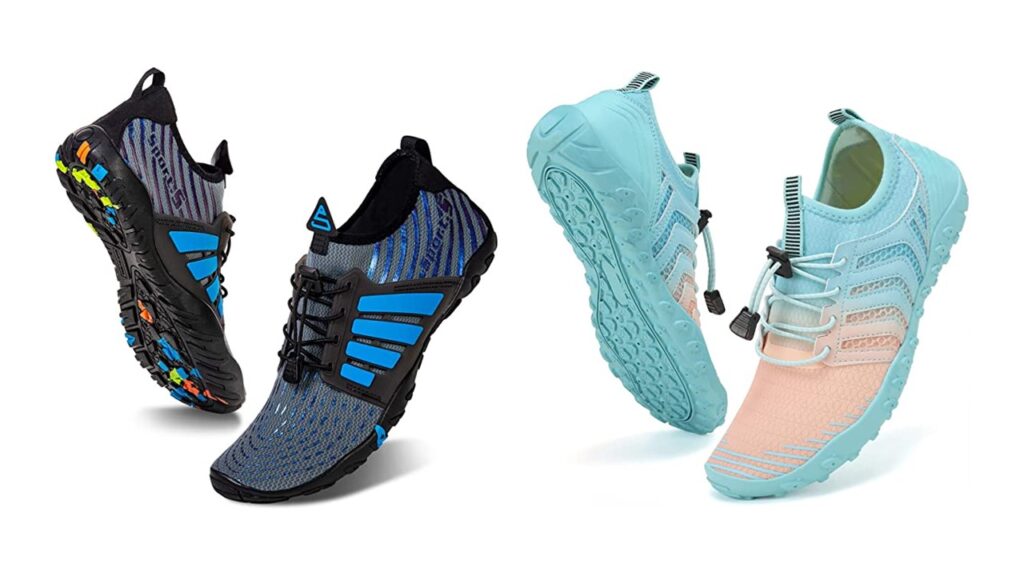
Water Shoes vs. Sandals vs. Barefoot (Do You Need Water Shoes In Hawaii)
| Aspect | Water Shoes | Sandals | Barefoot |
| Protection | Good protection from rocks, corals, and sharp objects in the water. | Limited protection, may not shield against sharp objects or rough terrains. | Minimal protection, vulnerable to sharp objects and hot surfaces. |
| Traction | Generally good traction with specialized soles for water activities. | Varies depending on the sole design; may not be as effective as water shoes. | Traction depends on the surface; slippery on wet and smooth surfaces. |
| Support | Provides decent foot and arch support, reducing strain during activities. | Varies depending on the sandal’s design; some offer more support than others. | No additional support; relies on the natural foot arch. |
| Comfort | Comfortable with cushioning and quick-drying materials. | Comfort level depends on the sandal’s design and materials used. | Comfort varies based on the terrain and individual foot sensitivity. |
| Drainage | Equipped with drainage systems to allow water to escape easily. | quick drainage, may retain some water. | Usually good drainage. |
| Versatility | Versatile for various water activities like snorkeling, hiking in wet conditions, etc. | Suitable for casual walks and light water activities but less versatile than water shoes. | Suitable for casual walks on dry surfaces but not ideal for many water activities. |
| Packing and Portability | May be bulky, may take up more space in a bag. | Usually lightweight and compact; easy to pack. But some may be bulky. | Easier to pack than water shoes and sandals. . |
| Durability | Durable materials designed to withstand water and outdoor use. | Durability varies based on the sandal’s quality and materials used. | No extra material to wear out; durability depends on foot conditions. |
| Water-related Activities | Excellent choice for water sports like snorkeling, kayaking, etc. | Suitable for water-based leisure activities like walking on the beach. | Not recommended for water-based activities due to lack of protection. |
| Beach and Pool Use | Ideal for beach and pool activities, providing protection and grip. | Suitable for casual beach and pool use but may lack grip and protection. | Commonly used at beaches and pools, but limited protection and grip. |
What To Pack For A Hawaii Water Adventure
Packing for a Hawaii water adventure requires careful consideration of the activities you plan to engage in and the specific location you’ll be visiting. Here’s a comprehensive list of items to pack for an enjoyable and safe water adventure in Hawaii:
- Water Shoes: As discussed earlier, water shoes are essential for protecting your feet and providing traction in various water activities.
- Swimsuits and Rash Guards: Pack comfortable swimsuits and rash guards to shield your skin from the sun and potential irritants in the water.
- Snorkeling Gear: If you plan to snorkel, bring your own mask, snorkel, and fins for the best experience.
- Sunscreen: Choose a reef-safe sunscreen with high SPF to protect your skin from the strong Hawaiian sun.
- Sunglasses: Polarized sunglasses help reduce glare and protect your eyes from harmful UV rays.
- Hat or Cap: A wide-brimmed hat or a baseball cap provides additional protection from the sun.
- Beach Towel: Bring a quick-drying and lightweight beach towel for lounging and drying off.
- Waterproof Phone Case: Keep your phone protected from water while still capturing beautiful moments.
- Dry Bag: A waterproof dry bag is useful for keeping your belongings safe and dry during water activities.
- Reusable Water Bottle: Stay hydrated by carrying a reusable water bottle and refilling it throughout the day.
- Insect Repellent: Depending on the location and time of year, insect repellent can be beneficial, especially if you plan to explore beyond the water.
- First Aid Kit: Carry a basic first aid kit with essentials like band-aids, antiseptic wipes, and pain relievers.
- Snacks: Pack some light snacks like energy bars or fruits to keep your energy up during the day.
- Camera or GoPro: Capture your adventures with a waterproof camera or GoPro.
- Lightweight Backpack: A small, lightweight backpack can be handy for carrying essentials during hikes or beach explorations.
- Flip-Flops or Sandals: Besides water shoes, bring flip-flops or sandals for walking on the beach or when you’re out of the water.
- Ziplock Bags: Use these to store wet items or protect important documents from water.
- Personal Medications: If you have any prescription medications, be sure to bring them along.
- ID and Travel Documents: Keep your identification, travel documents, and any required permits or reservations in a waterproof pouch or bag.
- Respectful Swimwear for Cultural Sites: Some Hawaiian cultural sites may require more modest swimwear, so pack something appropriate.
Remember to pack responsibly, avoiding single-use plastics and bringing only what you truly need. By being well-prepared, you can make the most of your water adventure in Hawaii and have a memorable and enjoyable experience.
RELATED: Are Water Shoes Waterproof – Find Your Ultimate Wet Adventure Companion!
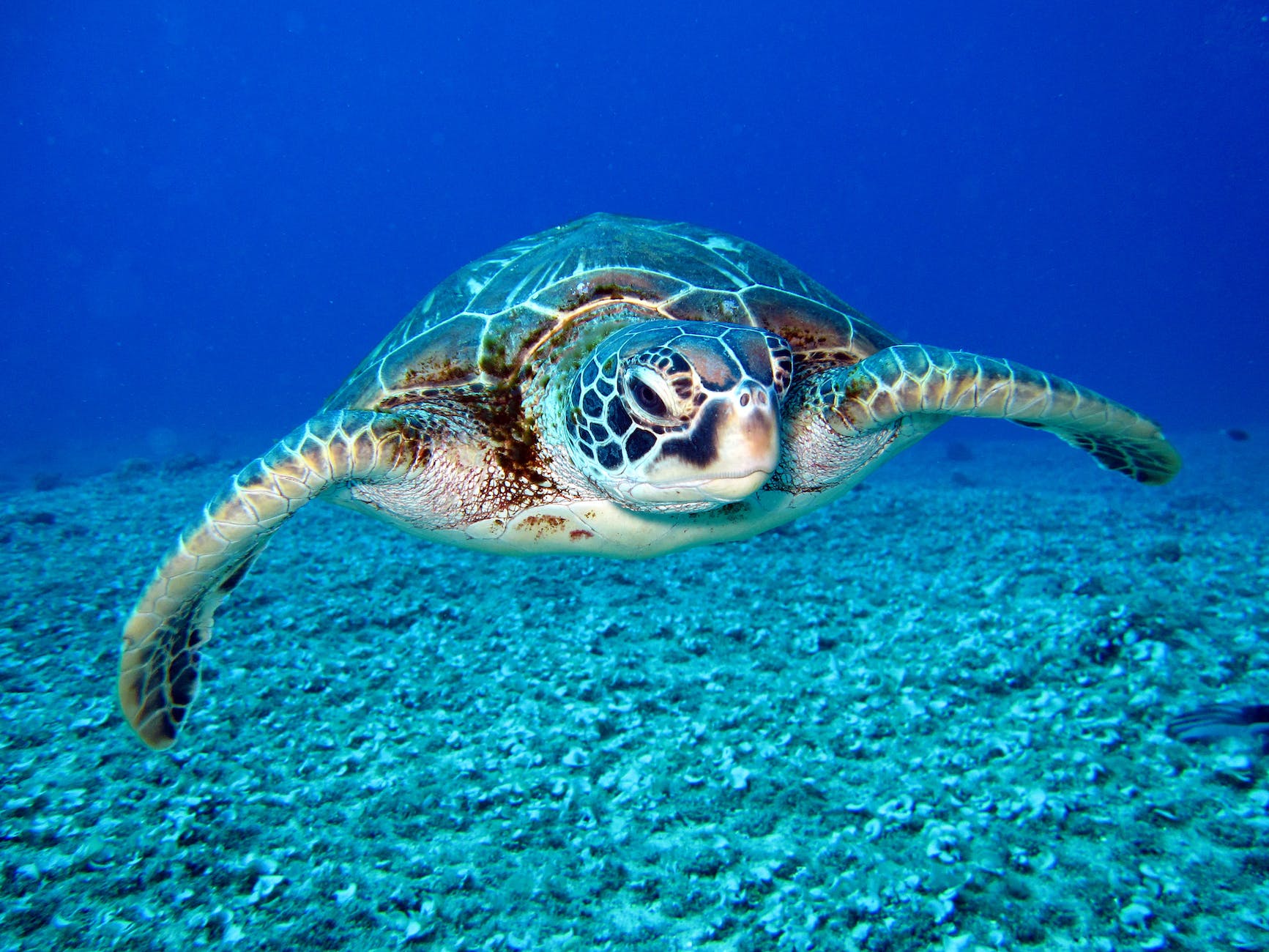
A Guide To Hawaii Marine Life
The Hawaiian waters are teeming with diverse and fascinating marine life, making it a paradise for snorkelers, divers, and nature enthusiasts. Here’s a brief guide to some of the incredible marine species you can encounter in Hawaii:
- Hawaiian Green Sea Turtle (Honu): The Hawaiian green sea turtle is one of the most iconic marine creatures on the islands. These gentle giants can often be spotted basking on the beaches or gracefully gliding through the water. Remember to maintain a safe distance and never touch or disturb them, as they are protected under federal and state laws.
- Hawaiian Spinner Dolphin (Nai’a): Known for their acrobatic spinning leaps, Hawaiian spinner dolphins are a delight to watch. They frequent the waters close to the shore and are often seen playfully swimming alongside boats.
- Hawaiian Monk Seal (Ilio-holo-i-ka-uaua): One of the most endangered seal species in the world, the Hawaiian monk seal is endemic to the islands. If you’re lucky, you might spot one lounging on the beach, as they tend to rest on the sandy shores.
- Manta Rays: Hawaii is home to both the majestic reef manta rays and the giant oceanic manta rays. These gentle giants can often be seen gliding gracefully through the water, especially during manta ray night dives off the Big Island.
- Humpback Whales (Kohola): During the winter months, humpback whales migrate to the warm Hawaiian waters to breed and give birth. Whale-watching tours offer a chance to witness their spectacular displays of breaching and tail slapping.
- Tropical Fish: The coral reefs around Hawaii are home to an incredible variety of colorful tropical fish. Look out for species like the humuhumunukunukuapua’a (Hawaiian triggerfish), parrotfish, butterflyfish, and many more.
- Coral Reefs: Hawaii’s coral reefs are vibrant and diverse, offering a home to an array of marine life. Remember to snorkel or dive responsibly, as coral is delicate and easily damaged.
- Octopus: Spotting an octopus can be a thrilling experience. They are masters of camouflage and can change color and texture to blend seamlessly with their surroundings.
- Eels: Several species of eels inhabit Hawaiian waters, such as the moray eel. While some eels are reclusive, others may be more curious and venture out of their hiding spots.
- Sharks: Hawaii is home to various shark species, including reef sharks and the occasional sighting of larger species like tiger sharks. It’s important to remember that most sharks are not aggressive towards humans and pose little threat.
When observing marine life in Hawaii, maintain a respectful distance, never touch or disturb the animals or their habitats, and follow responsible snorkeling and diving practices to protect the delicate marine ecosystem for future generations to enjoy.
If you’re unsure about a specific species or encounter, consider joining guided tours led by experienced marine naturalists who can provide valuable insights and ensure a safe and educational experience.
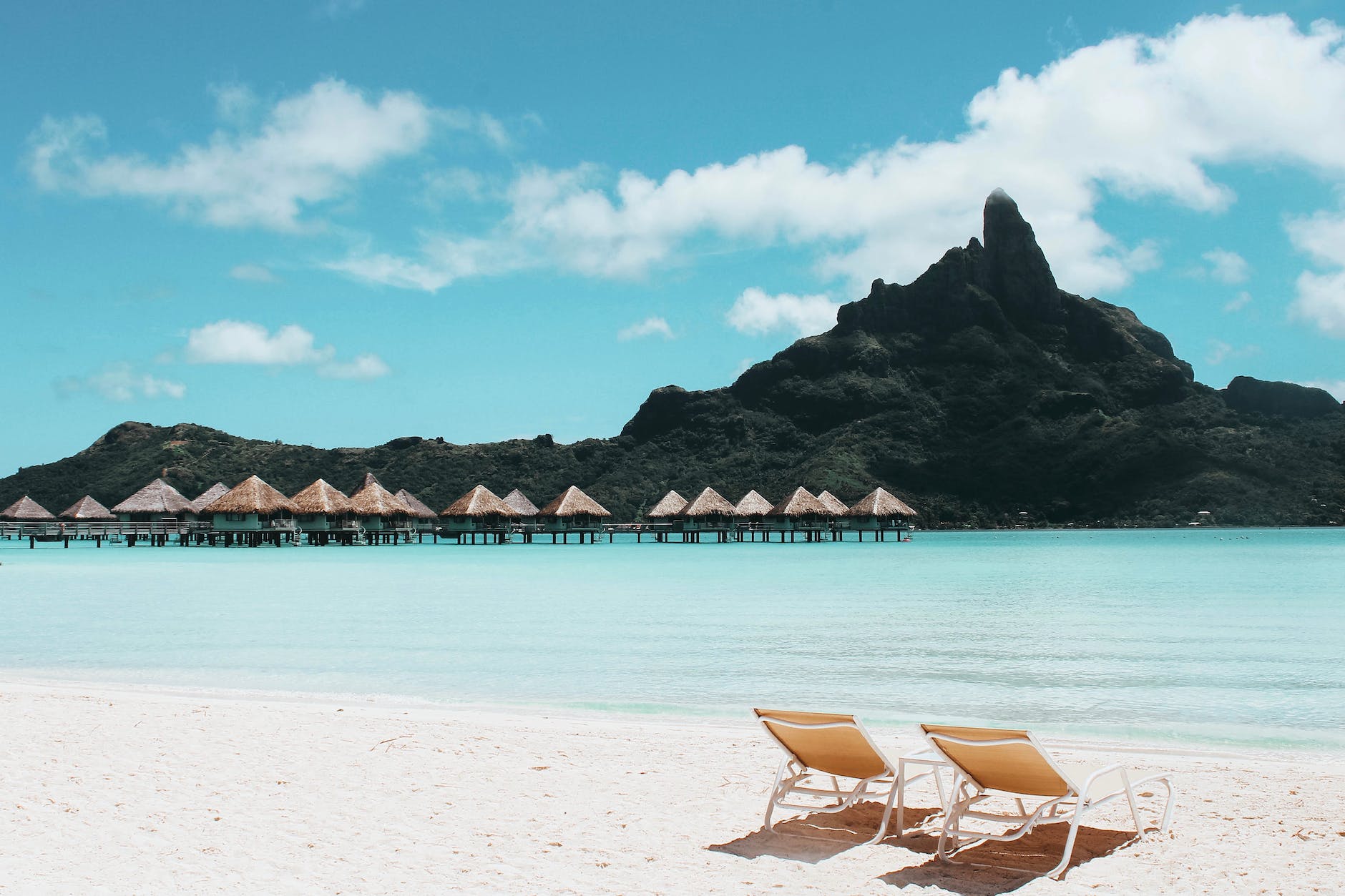
The Importance Of Water Safety In Hawaii
Water safety is of paramount importance in Hawaii due to the unique and diverse aquatic environments found throughout the islands.
Whether you’re swimming, snorkeling, surfing, or engaging in any water-based activity, understanding and adhering to water safety guidelines can significantly reduce the risk of accidents and ensure a safe and enjoyable experience. Always take your life jacket to water activities in Hawaii.
Here are some key reasons why water safety is crucial in Hawaii:
1. Powerful Ocean Conditions
Hawaii’s waters are known for their powerful currents, strong waves, and rapid changes in weather. Even experienced swimmers can be caught off guard, making it essential to be aware of local conditions and obey warning signs posted at beaches.
2. Rip Currents
Hawaii’s beaches are susceptible to rip currents, which are fast-flowing channels of water that can pull swimmers away from the shore. Knowing how to identify and navigate rip currents is vital for your safety.
3. Shorebreaks And Waves
Some beaches in Hawaii have powerful shorebreaks, where waves break directly onto the shore with force. Being hit by such waves can cause injury, particularly if you’re not prepared or know how to handle them safely.
4. Marine Life
While Hawaii’s marine life is fascinating, some species can be dangerous if approached or provoked. Understanding how to interact responsibly with marine life, especially sea turtles and monk seals, is crucial for their protection and your safety.
5. Unpredictable Weather
Weather conditions can change rapidly in Hawaii, leading to sudden storms, high winds, or heavy rainfall. Always monitor weather forecasts and be prepared for changes in conditions when engaging in water activities.
6. Snorkeling and Diving Risks
Snorkeling and diving accidents or even towable tubes accident can occur due to inexperience, equipment issues, or diving in unsafe conditions. Proper training, the use of well-maintained gear, and diving with a buddy is essential for safe underwater exploration.
7. Hazards Underwater
Beneath the water’s surface, there may be submerged rocks, coral reefs, or other hazards that can cause injuries if not navigated carefully.
8. Sun Exposure
Hawaii’s sunny climate increases the risk of sunburn and heat-related illnesses. Applying sunscreen, wearing protective clothing, and staying hydrated are essential to prevent sun-related health issues.
9. Drowning Incidents
Tragically, drowning incidents do occur in Hawaii, often involving tourists who are unfamiliar with local conditions. Being cautious and staying within your skill level when in the water is vital.
10. Preserving the Environment
Practicing water safety also extends to protecting Hawaii’s fragile marine ecosystems. Avoid touching or stepping on coral reefs, refrain from leaving trash on beaches, and follow responsible snorkeling and diving practices to minimize your impact on the environment.
Water safety education and awareness are key to preventing accidents and ensuring the well-being of both visitors and locals.
Before engaging in any water activities in Hawaii, it’s crucial to familiarize yourself with local guidelines, seek advice from lifeguards, and consider taking lessons or guided tours led by experienced professionals.
By prioritizing water safety, you can make the most of Hawaii’s beautiful waters while minimizing risks to yourself and the environment.
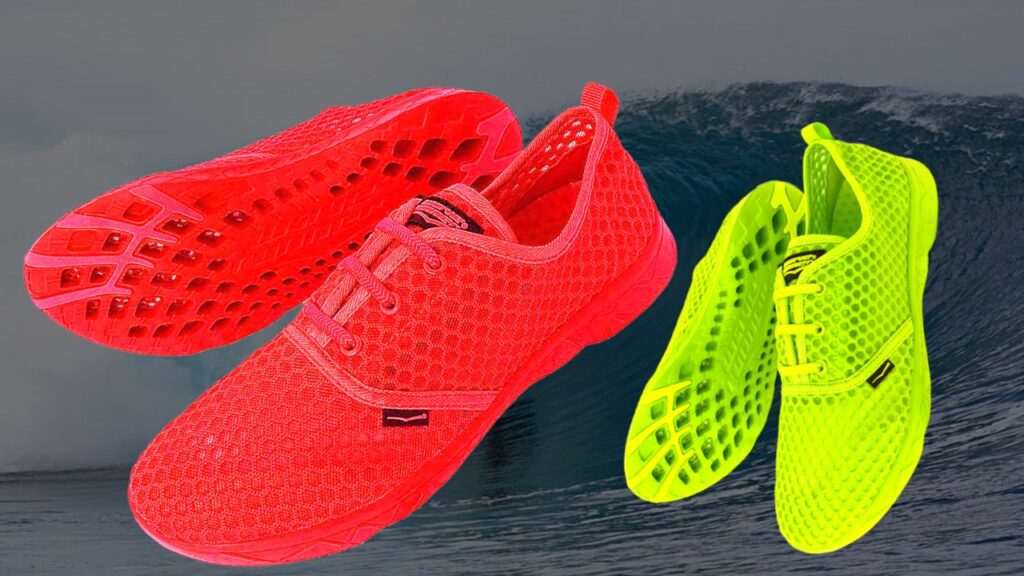
Types Of Water Sports Activities That Require Water Shoes In Hawaii (Do You Need Water Shoes In Hawaii)
Wearing water shoes is important for a variety of water sports and activities in Hawaii, particularly those that involve exposure to the ocean or shoreline. Here are some of the water sports and activities that may require water shoes in Hawaii:
1. Snorkeling
Snorkeling is a popular activity in Hawaii, and some of the best snorkeling spots may have rocky or uneven bottoms that can be uncomfortable or even dangerous to walk on without water shoes. Water shoes provide better grip and protection, reducing the risk of cuts or injuries.
2. Scuba Diving
Scuba diving in Hawaii can take you to amazing depths, but the ocean floor can be sharp and unpredictable. Wearing water shoes can help protect your feet from rough terrain and provide added insulation to keep you warm.
3. Surfing
Hawaii is known for its world-class surfing, but the rough, abrasive surface of a surfboard can cause injuries or cuts to bare feet. Water shoes provide better grip and protection, allowing surfers to focus on their ride without any worries.
4. Stand-Up Paddleboarding
Similar to surfing, stand-up paddleboarding can be hard on the feet, especially in rocky or shallow areas. Water shoes can help paddlers maintain their balance and avoid cuts or injuries.
5. Kayaking
Whether you’re exploring the coastline or paddling through a river, water shoes can provide better grip and stability on slippery surfaces. They also protect your feet from sharp rocks or debris that can easily cause injury.
6. Beachcombing
Walking along the beach in Hawaii can be a relaxing and enjoyable activity, but it’s important to be aware of hidden dangers like sharp shells, broken glass, or debris that can easily cut or puncture bare feet. Wearing water shoes can provide added protection and comfort.
7. Jet Skiing
Wearing water shoes is important when jet skiing in Hawaii because it provide better grip, support, and protection for your feet. When riding a jet ski, your feet are exposed to the rough and wet environment of the ocean, which can be harsh on bare feet.
Water shoes offer better traction on the slippery surface of the jet ski, preventing your feet from slipping or sliding around while you are riding. They also provide added support and cushioning, reducing the risk of foot fatigue or injury.
In addition, water shoes can protect your feet from sharp objects like rocks or shells that may be hidden under the water’s surface, preventing cuts or punctures.
Overall, wearing water shoes while jet skiing in Hawaii can improve your performance, reduce the risk of injury, and enhance your overall experience on the water.
RELATED: Do Water Shoes Protect Against Sea Urchins
8. Parasailing
Parasailing is an exciting recreational activity in which a participant is towed behind a boat while attached to a parasail wing. This thrilling experience offers breathtaking views of the ocean and coastline from a unique perspective.
Wearing water shoes is important when parasailing because they protect your feet from injury and provide better traction on the wet and slippery surfaces of the boat and parasail. During the experience, water shoes can also provide added cushioning and support, reducing the risk of foot fatigue or injury.
Ultimately, wearing water shoes while parasailing in Hawaii can help you stay safe and comfortable, allowing you to fully enjoy the stunning views and exhilarating adventure.
9. Hiking along rocky coastlines
Hawaii has some breathtaking coastal hiking trails, but many of them involve traversing rocky or uneven terrain that can be challenging without proper footwear. Water shoes provide better traction, grip, and support, reducing the risk of slipping, falling, or getting injured.
Overall, wearing water shoes is important for any water sports or activities that involve exposure to the ocean or shoreline. They provide better grip, protection, and comfort, allowing you to fully enjoy your Hawaiian adventure without any worries.
RELATED: DOUSSPRT Men’s Water Shoes Quick Drying Sports Aqua Shoes
What Are The Benefits Of Wearing Water Shoes (Do You Need Water Shoes In Hawaii)
Wearing water shoes can offer several benefits for water sports in Hawaii. Some of the benefits of wearing water shoes include:
- Protection: Water shoes can protect your feet from sharp objects like rocks, shells, or coral, reducing the risk of cuts or punctures.
- Traction: Water shoes provide better grip and traction on slippery and wet surfaces, like boat decks or rocks, preventing slips and falls.
- Comfort: Water shoes offer added cushioning and support for your feet, reducing foot fatigue and discomfort, especially during high-impact activities like surfing or paddleboarding.
- Hygiene: Water shoes can prevent the spread of bacteria or fungus, especially in warm and moist environments like the ocean or the beach.
- Warmth: Water shoes can provide added warmth and insulation, especially during colder water temperatures, helping to keep your feet comfortable.
- Improves performance: Water shoes can improve your performance in water sports like surfing or paddleboarding, allowing you to maintain better balance and control.
- Reduces foot fatigue: Water shoes offer added cushioning and support for your feet, reducing foot fatigue and discomfort, especially during high-impact activities.
Tips For Caring For And Maintaining Water Shoes (Do You Need Water Shoes In Hawaii)
One of the best ways to prolong the life of your water shoes is to take care of them properly. Here are some tips for caring for and maintaining water shoes:
- Rinse after use: Rinse your water shoes with fresh water after every use to remove any sand or debris that might have accumulated.
- Air dry: Allow your water shoes to air dry thoroughly before storing them. Avoid leaving them in direct sunlight or near a heat source, which can damage the material.
- Hand wash: If your water shoes are particularly dirty or smelly, hand wash them using mild soap and water. Avoid using harsh detergents or bleach, as they can damage the material. You can use baking soda and essential oil to get the odor out of your shoes.
- Store properly: Store your water shoes in a cool, dry place, away from direct sunlight or heat sources. Avoid storing them in a damp or humid area, which can cause mold or mildew to form.
- Check for damage: Regularly inspect your water shoes for signs of damage, such as tears or holes. If you notice any damage, repair it as soon as possible to prevent it from getting worse.
- Replace as needed: Water shoes are designed to be durable, but they do eventually wear out. When your water shoes start to show signs of wear and tear, it’s time to replace them to ensure you continue to receive the benefits of wearing them.
READ MORE: WateLves Water Shoes Review – Experience Comfort, Quality, And Style Like Never Before
Types of Water Shoes
1. Aqua Socks
Features: Aqua socks are lightweight, form-fitting water shoes made from breathable and stretchy materials like neoprene. They provide a snug fit and often have a slip-on design.
Advantages: Aqua socks offer good protection against minor abrasions, hot sand, and small rocks. They are flexible and easy to pack, making them suitable for various water activities.
Disadvantages: Aqua socks may not provide the best traction on slippery surfaces. They offer minimal arch support and aren’t as durable as other water shoe types.
2. Water Sandals
Features: Water sandals have an open-toe design, allowing for better ventilation. They often feature adjustable straps and a rugged sole for improved traction.
Advantages: Water sandals are comfortable and versatile, suitable for both in-water activities and short walks on land. They provide better drainage and breathability compared to enclosed water shoes.
Disadvantages: Water sandals might not offer as much protection as other water shoe types, particularly for activities involving sharp rocks or rough terrain. Sand and debris can also enter more easily.
3. Amphibious Shoes
Features: Amphibious shoes are designed to seamlessly transition between water and land activities. They have a closed-toe design, sturdy construction, and rubber outsoles for excellent grip.
Advantages: Amphibious shoes offer superior protection against rocks, coral, and debris. They provide better traction on slippery surfaces and are suitable for various water-based sports and hikes.
Disadvantages: Some amphibious shoes can be bulkier and less flexible than other water shoe options. They might take longer to dry due to their more robust construction.
4. Neoprene Water Shoes
Features: Neoprene water shoes are made from a thicker material, offering more insulation in cold water. They often have a lace-up or zippered closure for a secure fit.
Advantages: Neoprene water shoes provide additional warmth in cooler waters, making them suitable for snorkeling, diving, or kayaking. They offer decent protection against sharp objects.
Disadvantages: These shoes may be less breathable in hot conditions. Their thicker material might make them bulkier and less comfortable for extended use on land.
5. Barefoot Water Shoes
Features: Barefoot water shoes mimic the feeling of being barefoot while still providing a thin layer of protection. They are extremely lightweight and flexible.
Advantages: These shoes allow for natural movement and better sensory feedback. They’re great for activities like paddleboarding and yoga on the water.
Disadvantages: Barefoot water shoes offer minimal protection against sharp objects and rough surfaces. They might not be suitable for activities requiring more substantial foot support.
When comparing these types of water shoes, it’s important to consider the specific activities you’ll be engaging in, the terrain you’ll encounter, and your personal comfort preferences.
Ultimately, the right choice will depend on finding a balance between protection, comfort, and functionality for your Hawaii adventures.
Incorporating Water Shoes into Vacation Wardrobe
Incorporating water shoes into your vacation wardrobe while maintaining a stylish and cohesive look is definitely achievable. Here’s how to seamlessly blend water shoes with your vacation outfits, capturing the laid-back and vibrant vibes of Hawaiian islands:
1. Choose Versatile Colors
- Opt for water shoes in neutral tones like black, gray, or navy. These colors can easily complement a variety of outfits.
- If you prefer a pop of color, go for shades that mimic the ocean, such as aqua blue or teal.
2. Matching Beachwear
- For a beach day, pair your water shoes with swim shorts or a swimsuit cover-up.
- Choose water shoes with subtle patterns or tropical motifs to enhance the island feel.
3. Lightweight Cover-Ups
- Consider lightweight and flowy cover-ups like sarongs, kaftans, or linen shirts.
- These pieces can be worn over your swimwear and paired with water shoes for a relaxed beach-to-cafe transition.
4. Casual Sundresses
- Opt for casual sundresses in breathable fabrics like cotton or linen.
- Coordinate with water shoes by choosing a color that complements or contrasts with your dress.
5. Cargo Shorts and Tops
- Pair cargo shorts or lightweight cargo pants with casual T-shirts.
- Water shoes can be easily combined with this outfit for exploring trails, parks, or other outdoor activities.
6. Boho Vibes
- Embrace bohemian-inspired pieces like flowy maxi skirts, crochet tops, or fringed vests.
- Water shoes can add a practical element to your boho ensemble without compromising style.
7. Athleisure Look
- If you’re planning active adventures, opt for athleisure-style outfits.
- Pair athletic leggings or shorts with a moisture-wicking top and coordinate with sporty water shoes.
8. Beachy Accessories
- Accessorize with beach-inspired jewelry like shell necklaces, wooden bracelets, or woven hats.
- These elements can tie your outfit together and enhance the Hawaiian vacation theme.
9. Matching Prints
Coordinate prints and patterns between your water shoes and a statement piece in your outfit, like a beach tote or a hat.
10. Neutral Outfit, Bold Water Shoes
Create a focal point by wearing water shoes in a bold color or pattern with an otherwise neutral outfit.
11. Smart-Casual Outings
- For dinners or outings, consider smart-casual attire like linen pants and a light blouse or a button-up shirt.
- Pair with water shoes in a sophisticated color to maintain a polished look.
12. Packable Accessories
Rollable flats or compact sandals can serve as backups when you’re not in the water, offering both style and comfort.
Remember, the key is to strike a balance between practicality and style. Water shoes are versatile and can be integrated into various vacation outfits with a little creativity.
By selecting the right colors, coordinating with your attire, and paying attention to the overall island vibe, you can rock your water shoes while exploring Hawaii in style.
Do You Need Water Shoes In Waikiki (Do You Need Water Shoes In Hawaii)
It is recommended to wear water shoes in Waikiki, especially if you plan to engage in water sports activities like snorkeling or surfing. Waikiki Beach is a popular destination for tourists and locals alike, with many rocky areas that can pose a risk of injury to your feet.
Additionally, water shoes can provide better traction on slippery surfaces, reduce foot fatigue, and protect your feet from hot sand and sunburn. Therefore, wearing water shoes in Waikiki can improve your overall experience and keep your feet safe and healthy.
Do You Need Water Shoes For Snorkeling (Do You Need Water Shoes In Hawaii)
Wearing water shoes for snorkeling is not always necessary, but it can be beneficial in some situations.
If you plan to enter and exit the water from a rocky shore or if you need to walk on slippery rocks or sharp corals to get to your snorkeling spot, then water shoes can provide protection and prevent injuries to your feet.
Also, water shoes can provide better traction on slippery surfaces and protect your feet from hot sand and sunburn. In general, it’s always a good idea to bring a pair of water shoes with you when snorkeling in Hawaii and to assess the situation before deciding whether or not to wear them.
RELATED: Water Shoes Or Crocs: Which Is The Better Option For Water Activities?
Can You Wear Water Shoes With Fins?
You do not need water shoes if you are wearing full-foot fins as full-foot fins are designed to be worn bare foot. However, you can wear water shoes with open-heel fins. You can also wear water socks with both full-foot fins and open-heel fins.
The Bottom Line On Do You Need Water Shoes In Hawaii
So, Do you need water shoes in Hawaii? Wearing water shoes is highly recommended for anyone engaging in water sports activities in Hawaii.
The benefits of wearing water shoes include protecting your feet from injury, providing better traction, improving performance, reducing foot fatigue and offering insulation, among others.
So, whether you are an experienced water sports enthusiast or a first-time visitor to Hawaii, investing in a good pair of water shoes is a smart choice that can enhance your overall experience and keep your feet healthy and safe.










